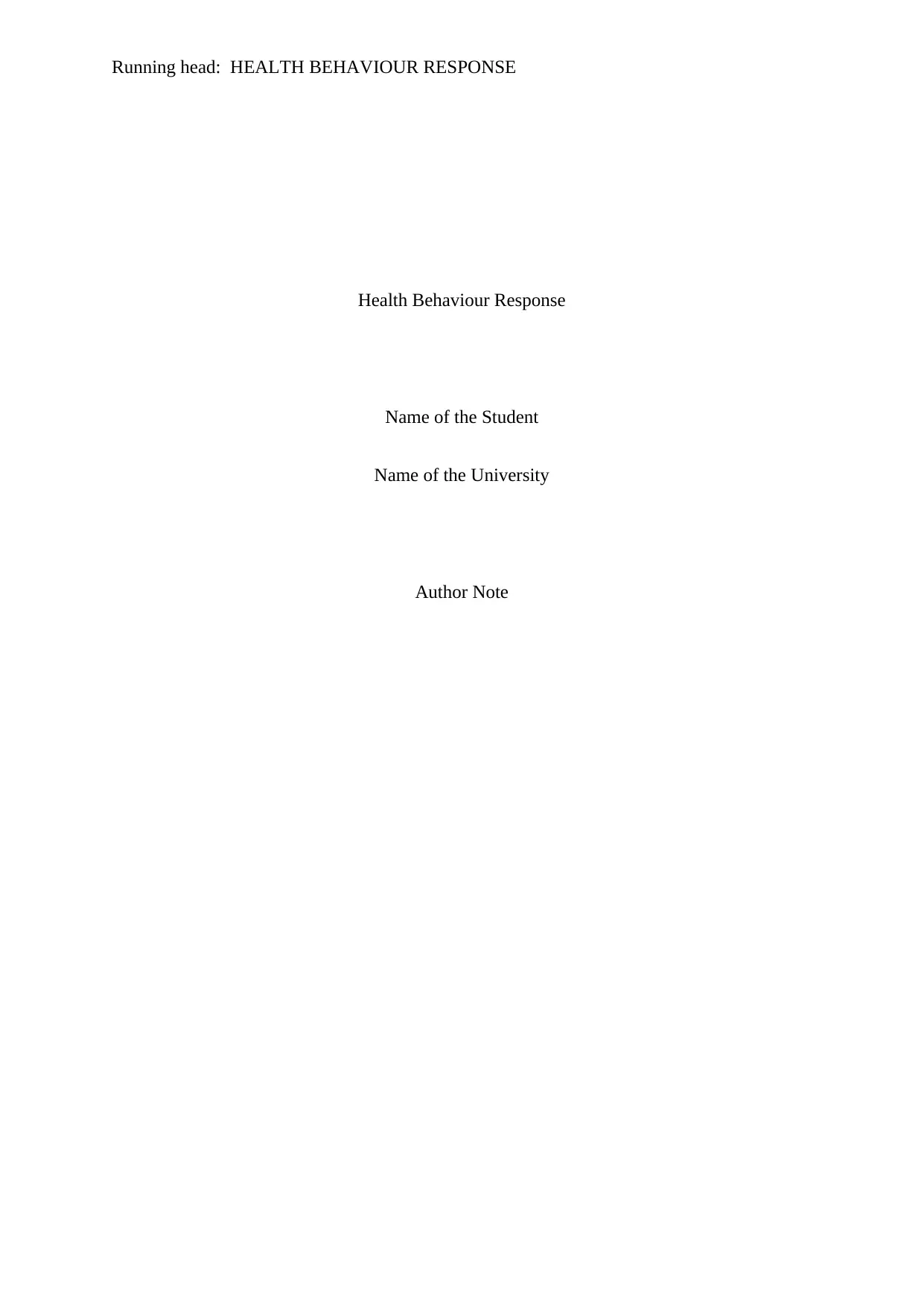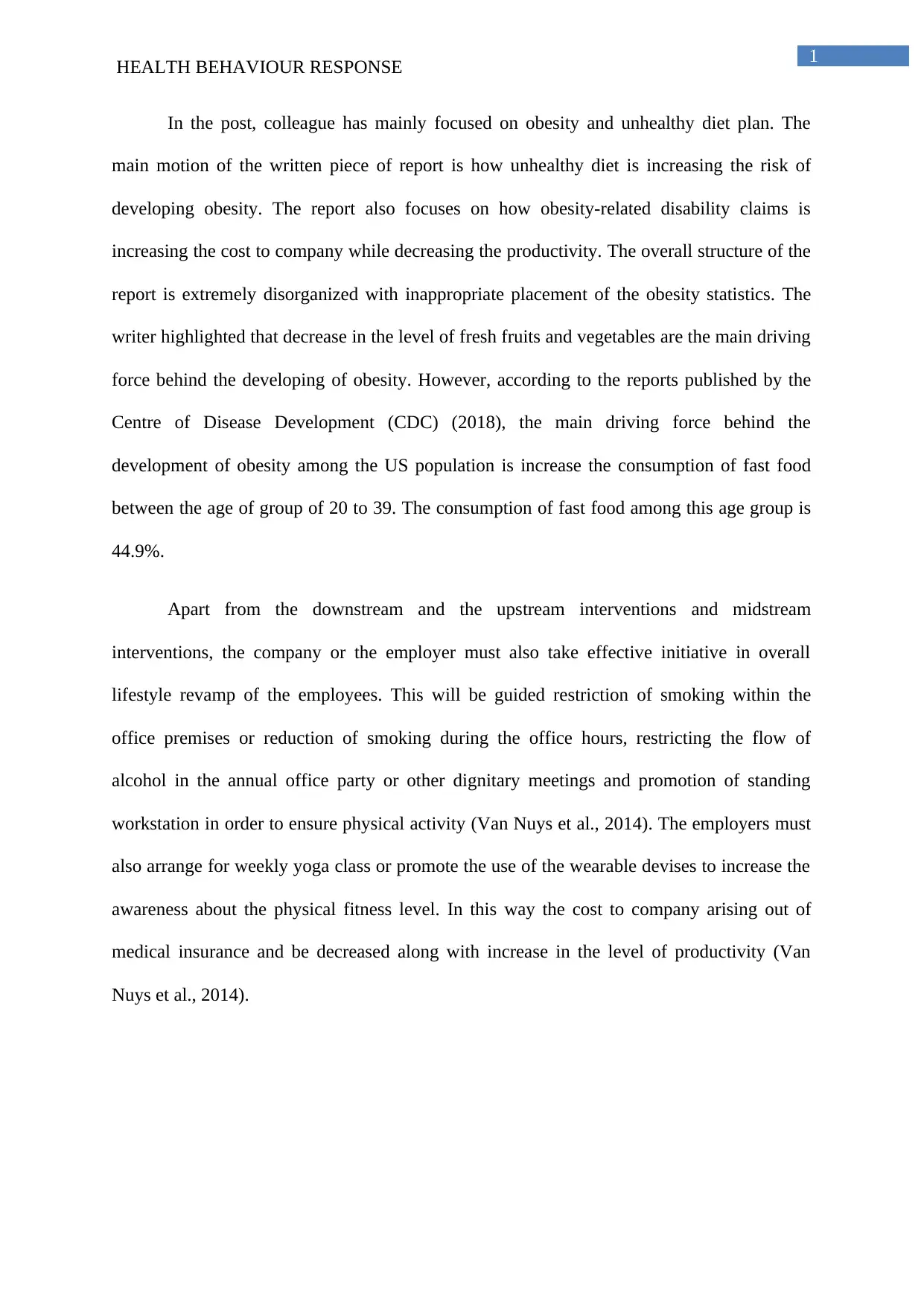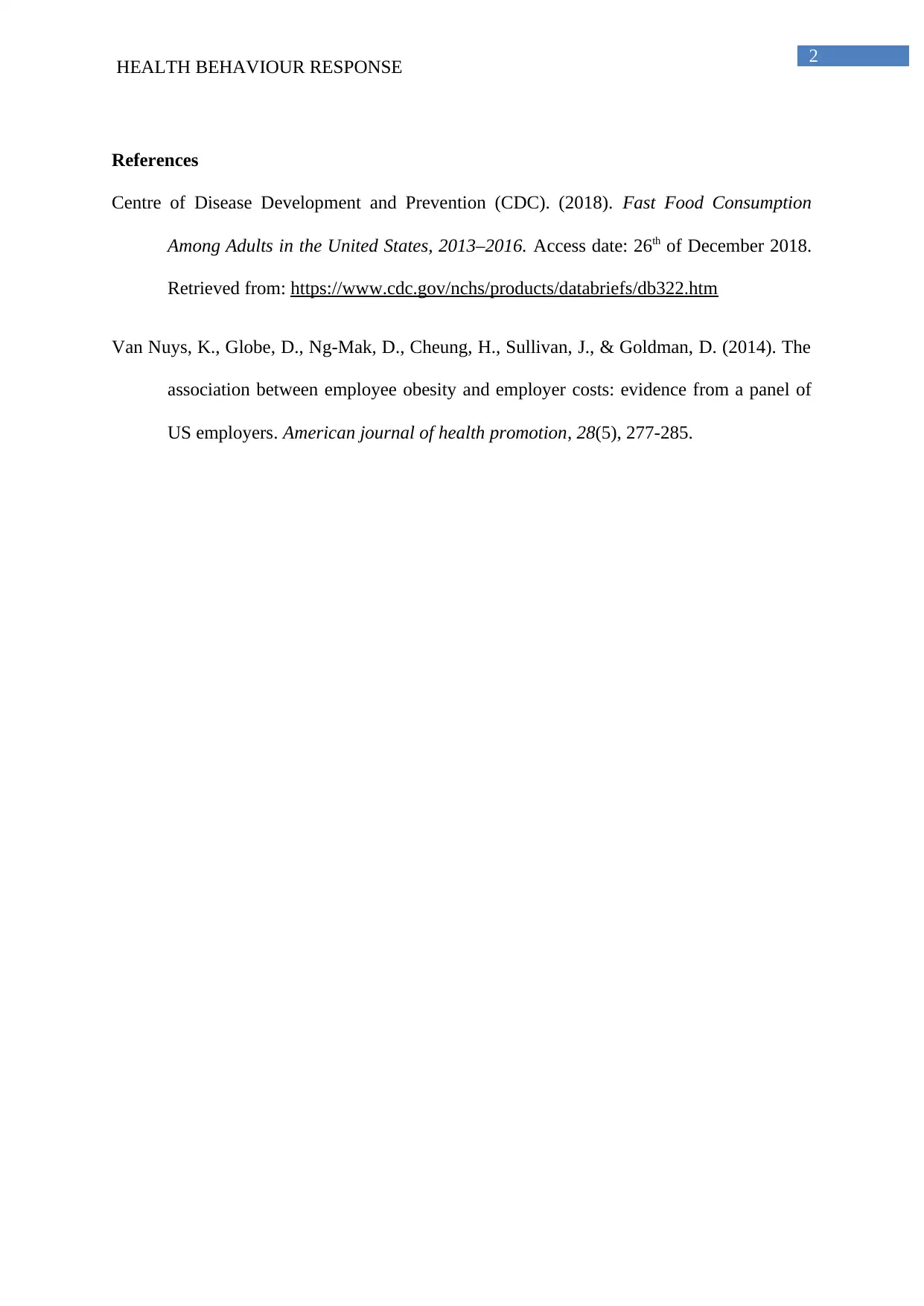Health Behaviour Response: Obesity, Diet, and Employee Productivity
VerifiedAdded on 2023/04/21
|3
|430
|145
Discussion Board Post
AI Summary
This assignment is a health behavior response to a colleague's post concerning obesity and unhealthy diet plans. The response critiques the original post's structure and statistics, particularly regarding the drivers of obesity, citing CDC data that emphasizes fast food consumption among adults aged 20-39. It suggests that in addition to downstream, upstream, and midstream interventions, employers should implement comprehensive lifestyle changes for employees, including smoking restrictions, reduced alcohol consumption, and the promotion of standing workstations. The response also advocates for weekly yoga classes and the use of wearable devices to enhance physical fitness awareness, ultimately aiming to reduce medical insurance costs and increase productivity. Desklib offers a wealth of resources for students, including solved assignments and past papers, to aid in their academic pursuits.
1 out of 3










![[object Object]](/_next/static/media/star-bottom.7253800d.svg)